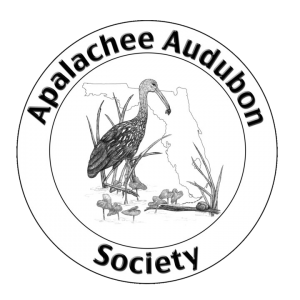During the annual Winter Shorebird Survey, birders and biologists all over Florida put their binoculars together to see how the original snowbirds are doing on their wintering grounds.
Some years back, my assigned territory required a kayak trip about a mile offshore to Lanark Reef, a set of linear, tidally submerged sandbars in Franklin County. There's really nothing out there for people, but that sand means everything to the birds.
The task I shared with my new birding buddy, Mike Miller, was to tally the numbers of 25 potentially occurring shorebirds, taking special care with the rarest and most imperiled: the American oystercatcher, the red knot, and three kinds of plover.
I first met Mike on the Apalachicola/St. Vincent NWR Christmas Bird Count, back when Barbara Stedman ruled Territory 2. Five of us were assigned to Barbara and her truck. It was crowded inside, so Mike and I stood in the bed of the vehicle. If we’d see a good raptor or find ourselves driving through a feeding guild of songbirds, we’d pound on the roof so everyone could pile out and tally. In later years, after Barbara’s passing, I took over Territory 2, and Mike stayed on the team along with Grayal Farr and others.
Mike Miller could sure tell a story. He was a talker. His 70 plus years had been so rich and full and lucky. Driving to the coast, driving to a count, wherever we found ourselves among wild birds, he’d entertain me with stories about working in the Red Hills, his grandchildren, his writing for Florida Wildlife magazine and his time as a small business owner selling outdoor gear.
What we had most in common was a love of this place, our North Florida bioregion from the Red Hills to the Gulf of Mexico.
Mike Miller at his spotting scope
Mike had an eye for the winter ducks. Our team counted on him to fill out our waterfowl list. He’d never disappoint. When we’d survey Tahiti Beach on the east facing shore of St. Vincent, he’d melt into the palm and pine landscape and return with a sighting of a Sambar elk, and the gadwall that the rest of us had missed.
That day out on Lanark Reef, we saw so many birds probing and plucking in the shallow water that we had to take turns with the spotting scope to spell our eyes. We set up a grid: Mike would count everything between the boat ramp and the water tower, calling out what he saw. When he counted dunlin, the most numerous little shore bird on the reef, I’d have a long time to wait and look around.
"Ten.” Pause. “Twenty,” he reported. “Another 30.” Pause. Silence.
“Take your time,” I said, shifting from foot to foot on the sand, relishing the sun on my back and the silence. Enjoying my great good luck to be out there at all. I thought about how a few years ago, a Tallahassee developer proposed plans to develop this very set of sandbars into condos. With septic tanks. Our Audubon Society put up the bucks to buy the reef and saved it for these shorebirds, who cannot live without it.
Then it would be my turn to count.
It took us four hours to tot up the several thousand birds taking refuge on Lanark at low tide. Our conservative estimate of dunlins was 1300 individuals. We saw 307 marbled godwits (those glorious cinnamon feathered beauties!). More than I've ever seen in one place. Ever.
When the wind is shaking your spotting scope and the tide is aslosh at your feet, you want a buddy with Mike’s experience and enthusiasm to back up your Wilson’s plover count. That’s the kind of friend you want in your life, too. When COVID came to town, my circle of in person get togethers contracted. I didn’t see Mike for two and a half years, and now he is gone.
With his passing, we have lost one of the too few naturalists who love this bioregion and keep it foremost in their commitments and activism. Weren’t we lucky to have him among for all this time?


